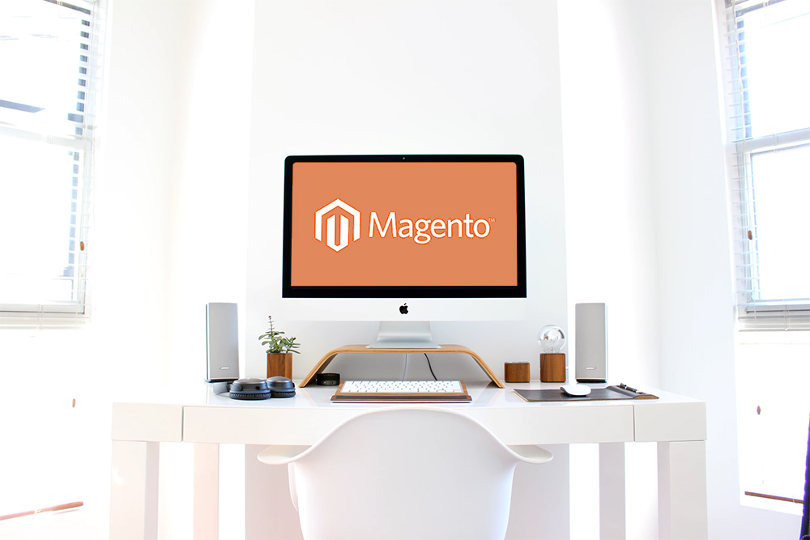As the eCommerce industry continues to grow, more and more businesses are turning to Magento to power their online stores. Magento is one of the most popular and powerful eCommerce platforms, offering scalability and flexibility for creating a unique and successful online store. But with all the options available, creating a successful eCommerce website on Magento can be a daunting task.
To maximize your success and ensure a smooth design process, it’s imperative to follow the best practices for designing an eCommerce website on Magento.

Choosing the Right Magento Edition
When it comes to designing an eCommerce website on Magento, the first step is to choose the right Magento edition. Magento offers two versions of its platform, Magento Open Source and Magento Commerce.
Magento Open Source is the free, open source version of the platform, while Magento Commerce is the paid enterprise version. Magento Open Source is ideal for businesses with a tight budget or those who want to customize the platform, while Magento Commerce is better suited for businesses with larger budgets who want access to additional features and support. Upgrade your Magento store with Hyvä theme development to get lightning-fast speed and a better conversion rate.
Setting Up Your eCommerce Store
Once you’ve chosen the right Magento edition for your business, it’s time to set up your eCommerce store. This includes setting up your domain name, hosting, payment gateway, shipping method and other essential components.
It’s important to get all of these elements in place before you start designing your eCommerce website.
Designing the User Interface
The next step in designing an eCommerce website on Magento is to design the user interface. This includes the look, feel, navigation and content of the website. When designing the user interface, there are a few key considerations to keep in mind.
First, make sure the website is easy to navigate and user friendly. Include intuitive navigation and clear page titles, and make sure all the essential information is prominently displayed. Second, make sure the website is visually appealing and modern. Use high-quality images and graphics to create an attractive website, and use colors that are consistent with your brand.
Ensure that the website is optimized for mobile devices, so that users have a smooth, responsive experience when accessing the website on their phones. Many shoppers now use their smartphones to shop, so make sure your website is mobile-friendly. The Digital Silk company for magento e commerce design can help you get your business website up and running with a mobile-friendly design.
Optimizing for Mobile Devices
A mobile-friendly eCommerce website is a must for any successful business. As more and more shoppers shop on their phones and tablets, mobile optimization is essential to ensure a smooth shopping experience.
To optimize your eCommerce website for mobile devices, consider using responsive design techniques, such as resizing and rearranging page elements, to create an optimal viewing experience. Additionally, use a mobile-friendly shopping cart, payment system, and checkout process to ensure the entire shopping experience is optimized for mobile.

Establishing a Checkout Flow
The checkout process is a key element of an eCommerce website, as it is critical for a successful online shopping experience. A successful checkout process should be simple and easy to use, without too many steps or fields for the customer to fill out. Additionally, it should provide customers with a secure and trustworthy checkout experience.
To ensure a successful checkout flow, consider using one-page checkout options and offering a guest checkout option. Additionally, provide customers with helpful notifications and reminders throughout the checkout process to help them complete their purchase.
Setting Up Shipping Options
Shipping options are a crucial part of any eCommerce website. Customers want to know the cost of shipping and the estimated time of arrival for their order.
To ensure customers receive the shipping information they need, make sure to provide clear and accurate shipping information upfront. Additionally, consider offering multiple shipping options, such as express or standard shipping, to give customers the flexibility to choose the option that best meets their needs.
Creating a Secure Payment System
Security is essential when it comes to online payments. Customers need to feel confident that their payment information is secure when they make a purchase.
To ensure a secure payment system, consider using a secure payment gateway, such as PayPal or Stripe. Additionally, make sure your website is SSL-certified, which will encrypt communication between your website and customers. Finally, ensure that your website is PCI compliant, which will ensure that all customer data is stored securely.
Conclusion
In conclusion, designing an eCommerce website on Magento requires careful planning and implementation. By following the best practices outlined in this article, you can create a successful store that meets all the needs of your customers.
From selecting the right edition to setting up a secure payment system, the steps outlined in this article will help you create a successful Magento-powered eCommerce store.




